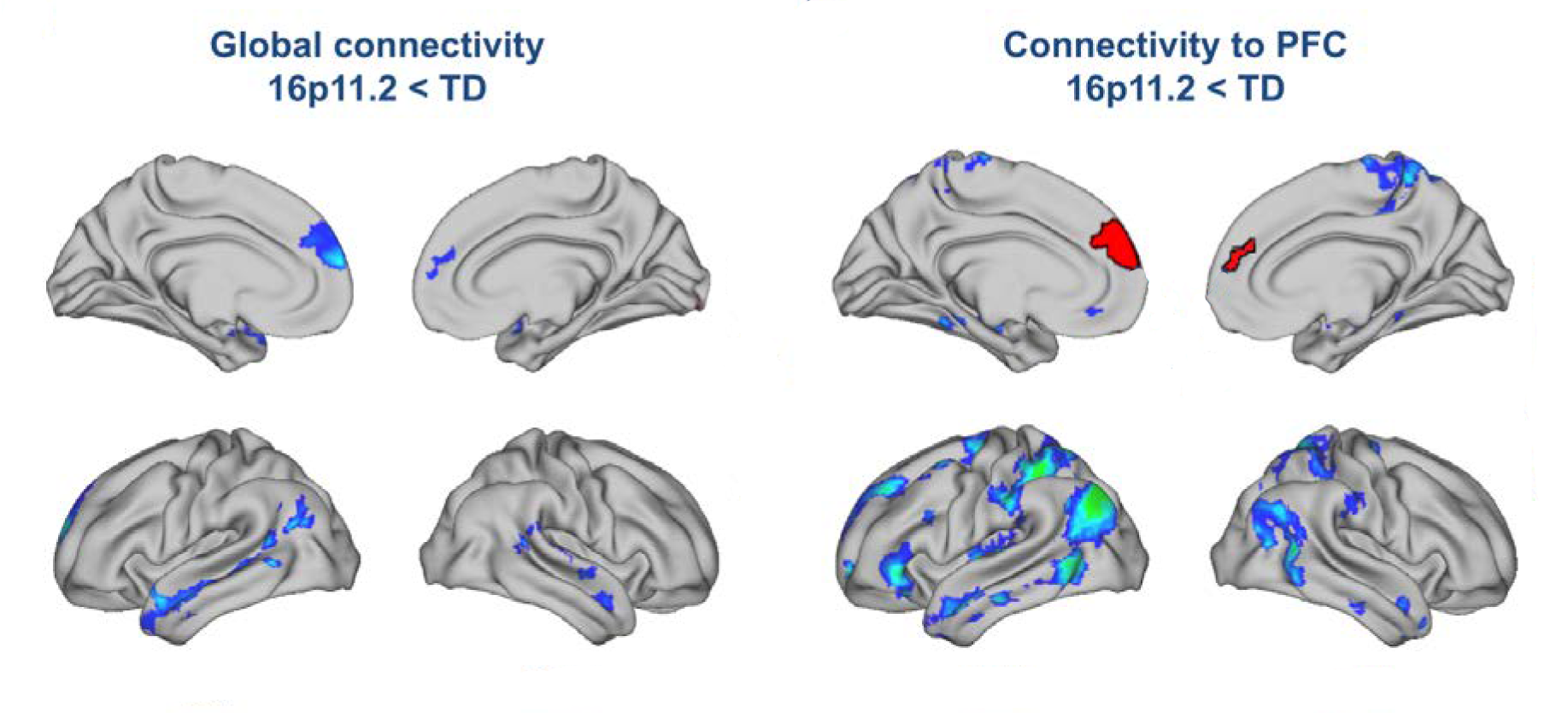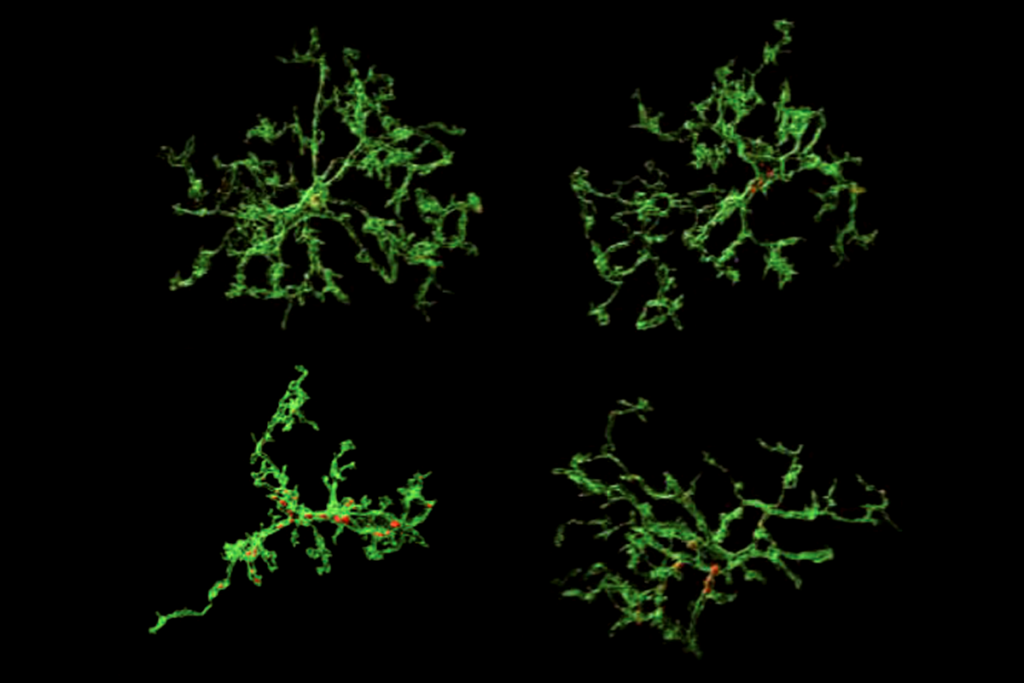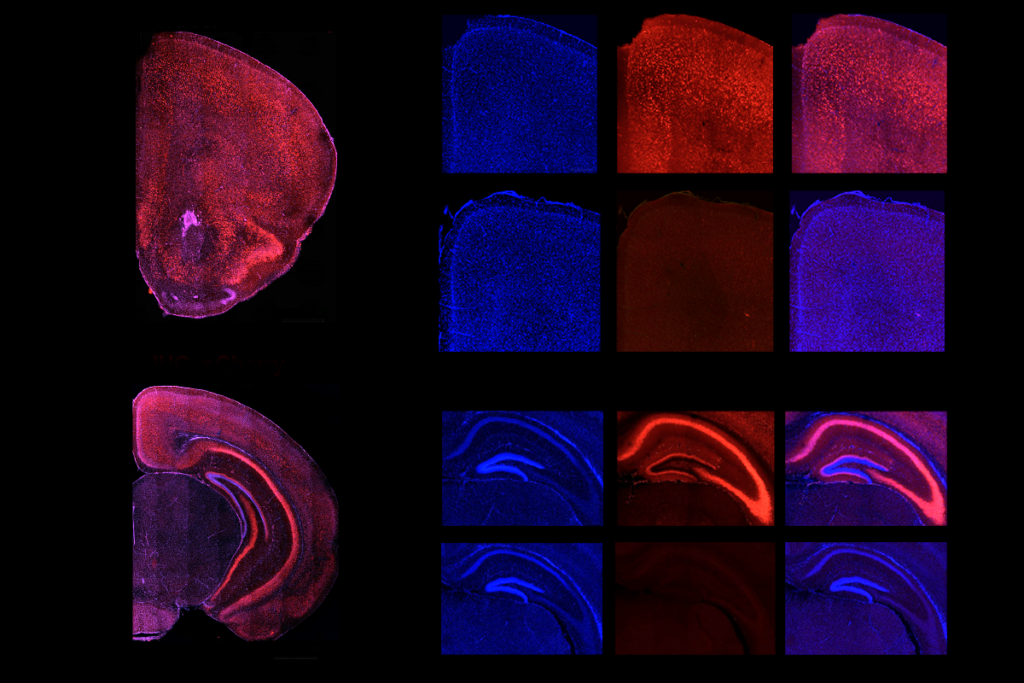
Chromosome 16 deletion miswires brain in people, mice
Mice and people missing a copy of a chromosomal region called 16p11.2 show similar patterns of weak brain connections.
Editor’s Note
This article was originally published 14 November 2017, based on preliminary data presented at the 2017 Society for Neuroscience annual meeting in Washington, D.C. We have updated the article following publication of the work 2 May 2018 in Brain1. Updates appear below in brackets.
Mice and people missing a copy of a chromosomal region called 16p11.2 show similar patterns of weak brain connections.
The results suggest that the mice faithfully represent at least some features of people with this deletion.
“In the mouse, these connectivity networks are preserved; they recapitulate features of the human brain,” says lead investigator Alessandro Gozzi, senior researcher at the Istituto Italiano di Tecnologia in Rovereto, Italy. Gozzi presented the unpublished findings yesterday at the 2017 Society for Neuroscience annual meeting in Washington, D.C.
Several studies suggest that people with autism have weakened connectivity between the brain’s prefrontal cortex — a hub for social behavior and cognition — and other areas of the brain. Connectivity is a measure of how in sync different brain areas are with one another; brain areas that increase or decrease their activity at about the same time are considered to be strongly connected.
Deletions of 16p11.2 are among the most common mutations found in people with autism, accounting for up to 1 percent of people with the condition. But the patterns of connectivity in the brains of people with these deletions is unknown.
Activity monitors:
Gozzi and his colleagues analyzed functional magnetic resonance imaging (fMRI) scans from 19 children with a 16p11.2 deletion and 28 age- and sex-matched controls. The images were taken as the participants lay passively in a scanner.
The researchers found that people with a 16p11.2 deletion tend to have weak connections between the prefrontal cortex and other parts of the brain, including parts of the temporal and parietal lobes that are involved in social behavior and cognition. This hypoconnectivity tracks with poor scores on tests of social and cognitive abilities. “This is interesting, but it’s very few [participants],” Gozzi says.
His team decided to try to corroborate their findings in mice missing one copy of 16p11.2.
Brain scans of sedated mice revealed that the mutants have weak connections between the prefrontal cortex and the retrosplenial cortex, which is important for a range of cognitive functions.
The researchers saw similar results using probes inserted into the brain that detect electrical activity. Measured this way, the mutant mice show a decrease in low-frequency brain waves called delta rhythms, which are thought to originate in a region deep in the brain called the thalamus.
To better understand connections between the cortex and other brain regions, Gozzi and his colleagues analyzed the structure of nerve bundles in the mice using a brain imaging technique called diffusion tensor imaging. They did not find any obvious [large-scale] differences between the mutants and controls.
[They then probed the structural integrity of nerve fibers using a measurement called fractional anisotropy, which is based on the diffusion of water in the brain. (Water flows more easily along parallel, densely packed fibers than it does along jumbled, loosely packed fibers.) The mutant mice show an increase in this measure of integrity, similar to that seen in people with a 16p11.2 deletion.]
Subtle structures:
To find more subtle differences, the researchers injected the brains of the mice with a rabies virus carrying a fluorescent tag that labels neurons. They found that the mutant mice have more neuronal projections from the thalamus to the prefrontal cortex than controls do.
“The thalamus is much more innervated in these mice, which is indicative of miswiring,” Gozzi says. He says the miswiring could be related to the altered delta waves in the mice.
Gozzi’s team also found that neurons in the prefrontal cortex of the mutant mice have fewer dendritic spines, the tiny branches that receive signals from other neurons.
[Using brain tissue from the mutant mice, the researchers found that nerve fibers in the corpus callosum, a bundle of nerves that connects the two sides of the brain, are unusually thick. The corpus callosum fibers also have unusually large amounts of myelin, a waxy substance that insulates neurons.]
It is unclear how the altered spines, weak connections, [thick fibers] and the miswiring relate to one another, but the data are all indicative of altered prefrontal connectivity as a result of 16p11.2 deletion, he says.
His team has found similar patterns of underconnectivity in the prefrontal cortex of other mouse models of autism, including those with mutations in SHANK3 and CNTNAP2, two top candidate genes for autism.
For more reports from the 2017 Society for Neuroscience annual meeting, please click here.
References:
- Bertero A. et al. Brain Epub ahead of print (2018) PubMed
Recommended reading

Constellation of studies charts brain development, offers ‘dramatic revision’

Functional connectivity links with autism, not ADHD; and more

Ramping up cortical activity in early life sparks autism-like behaviors in mice
Explore more from The Transmitter

‘How to Change a Memory: One Neuroscientist’s Quest to Alter the Past,’ an excerpt
